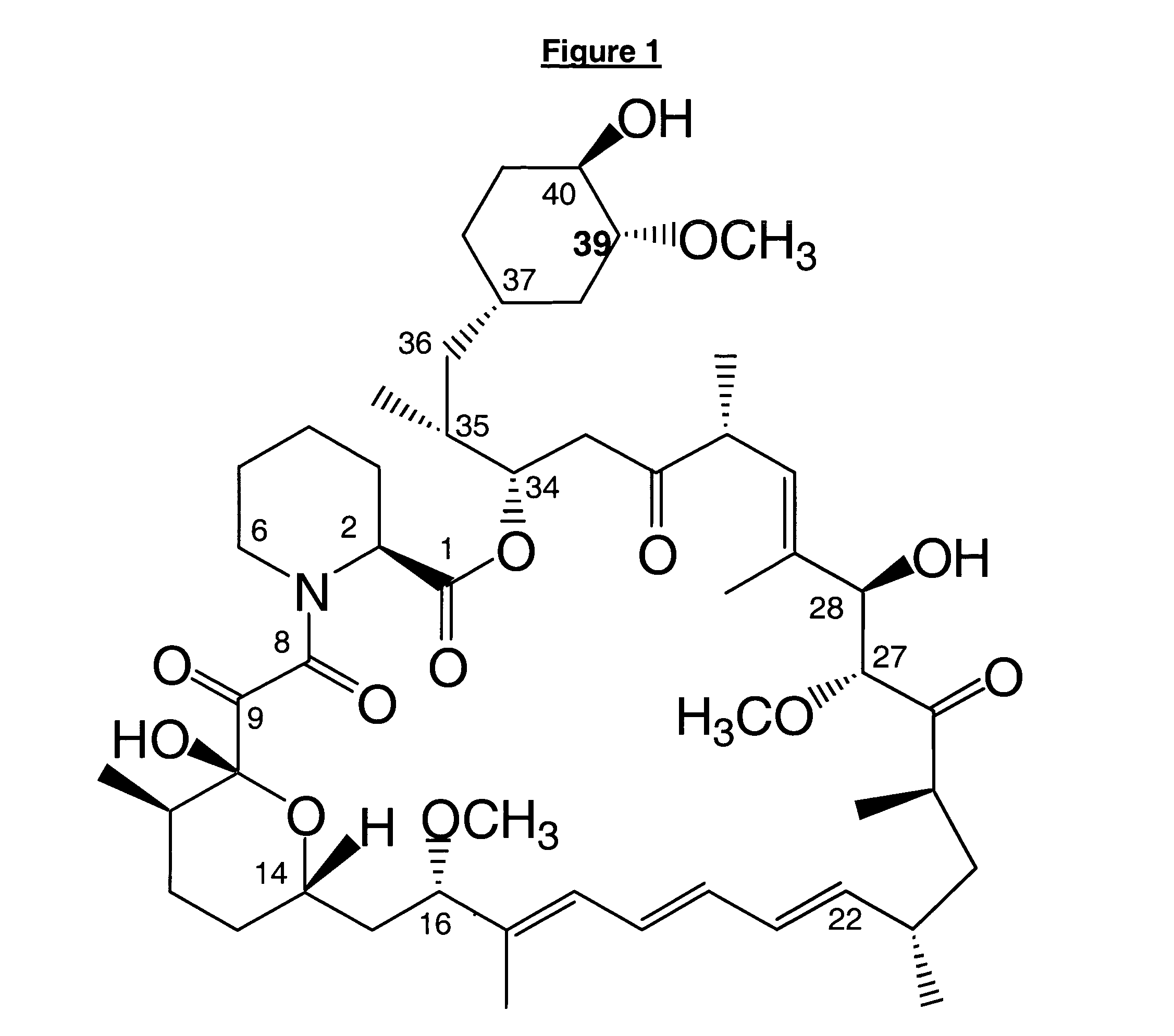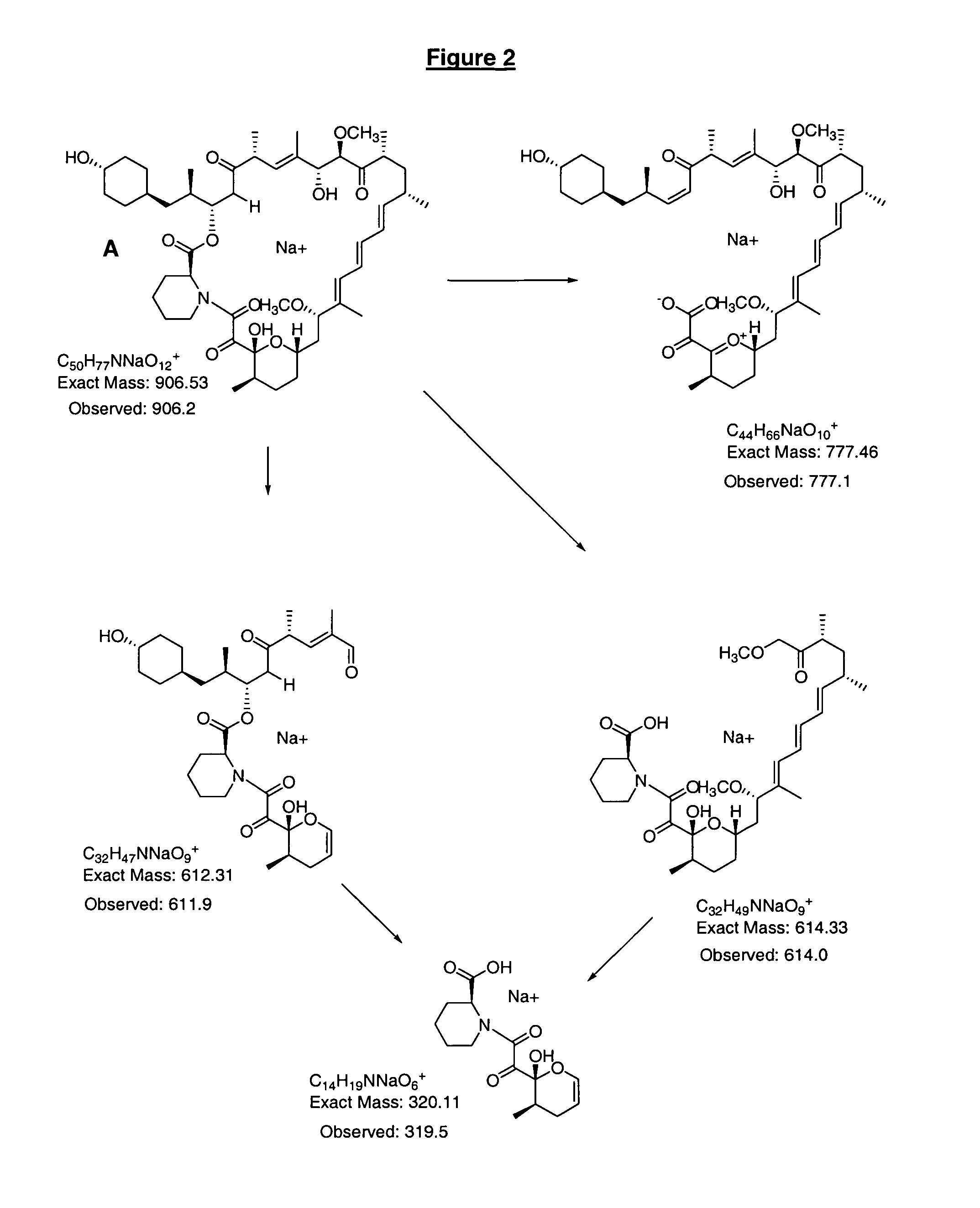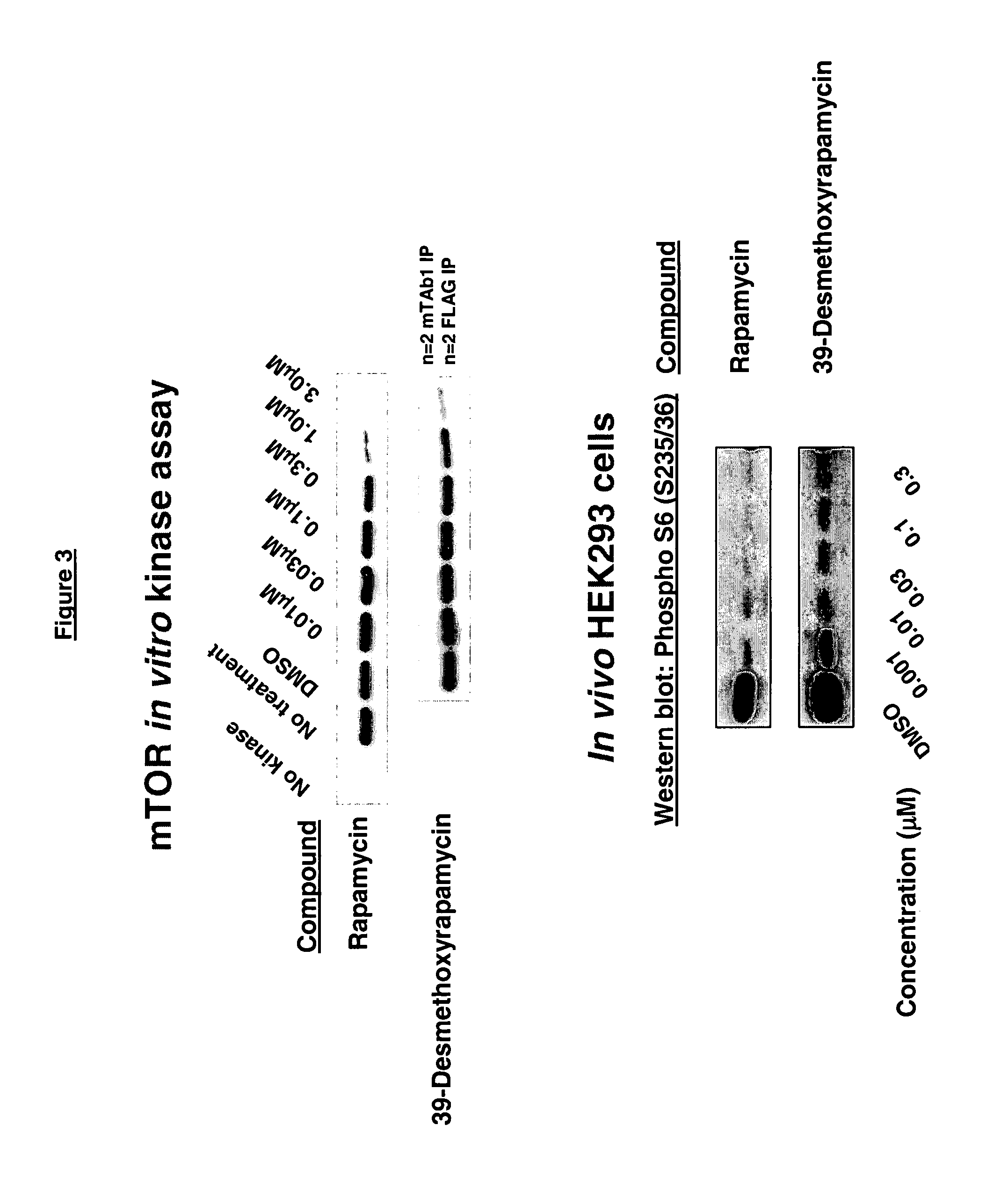39-desmethoxyrapamycin, compositions and methods of use thereof
a technology of desmethoxyrapamycin and compositions, applied in the field of desmethoxyrapamycin, compositions and, can solve the problems of poor penetration of cell membranes by rapamycin, poor absorption of compound after dosing, and less effective rapamycin against multi-drug resistance (mdr) cancer cells, etc., to facilitate uniform distribution of active ingredients and enhance stability
- Summary
- Abstract
- Description
- Claims
- Application Information
AI Technical Summary
Benefits of technology
Problems solved by technology
Method used
Image
Examples
example 1
Fermentation and Isolation of 39-Desmethoxyrapamycin
[0111]39-Desmethoxyrapamycin is produced by growing cultures of S. hygroscopicus MG2-10 [IJMNOQLhis] and feeding with cyclohexanecarboxylic acid (CHCA) as described below.
[0112]A vegetative culture of S. hygroscopicus MG2-10 [IJMNOQLhis] was cultivated as described in Materials & Methods. Production cultures were inoculated with vegetative culture at 0.5 mL into 7 mL medium 3 in 50 mL tubes. Cultivation was carried out for 7 days, 26° C., 300 rpm. One millilitre samples were extracted 1:1 acetonitrile with shaking for 30 min, centrifuged 10 min, 13,000 rpm and analysed and quantitated according to analysis Method B (see Materials & Methods). Confirmation of product was determined by mass spectrometry using analysis Method C (see Materials & Methods).
[0113]The observed rapamycin analogue was proposed to be the desired 39-desmethoxyrapamycin on the basis of the analytical data described under characterisation below.
Ferm...
example 2
In Vitro Bioassays for Anticancer Activity
In Vitro Evaluation of Anticancer Activity of 39-Desmethoxyrapamycin
[0120]In vitro evaluation of 39-desmethoxyrapamycin for anticancer activity in a panel of 12 human tumour cell lines in a monolayer proliferation assay was carried out as described as Protocol 1 in the general methods above using a modified propidium iodide assay.
[0121]The results are displayed in Table 2 below, each result represents the mean of duplicate experiments. Table 3 shows the IC50 and IC70 for the compounds and rapamycin across the cell lines tested.
[0122]
TABLE 2Test / Control (%) at drug concentrationRapamycin39-desmethoxyrapamycinCell line1 μM10 μM1 μM10 μMSF26853.54657.523251L75.5408632.5H46067667155.5MCF768.526.592.518.5MDA2316763.56837.5MDA46856.5326513.5394NL45444840.5OVCAR36969.577.562DU14550.55465.544.5LNCAP613474.528.5A49858.548.562.543.51138L4221.5529.5
[0123]
TABLE 3Rapamycin39-desmethoxyrapamycinMean IC50 (microM)3.53.25Mean IC70 (microM)9.16.95
In Vitro Ev...
example 3
In Vitro ADME Assays
Caco-2 Permeation Assay
[0127]Confluent Caco-2 cells (L1, A. P., 1992; Grass, G. M., et al., 1992, Volpe, D. A., et al., 2001) in a 24 well Corning Costar Transwell format were provided by In Vitro Technologies Inc. (IVT Inc., Baltimore, Md., USA). The apical chamber contained 0.15 mL Hank's balanced buffer solution (HBBS) pH 7.4, 1% DMSO, 0.1 mM Lucifer Yellow. The basal chamber contained 0.6 mL HBBS pH 7.4, 1% DMSO. Controls and tests were incubated at 37° C. in a humidified incubator, shaken at 130 rpm for 1 h. Lucifer Yellow permeates via the paracellular (between the tight junctions) route only, a high Apparent Permeability (Papp) for Lucifer Yellow indicates cellular damage during assay and all such wells were rejected. Propranolol (good passive permeation with no known transporter effects) & acebutalol (poor passive permeation attenuated by active efflux by P-glycoprotein) were used as reference compounds. Compounds were tested in a uni- and bi-directional ...
PUM
| Property | Measurement | Unit |
|---|---|---|
| concentration | aaaaa | aaaaa |
| wavelength | aaaaa | aaaaa |
| diameter | aaaaa | aaaaa |
Abstract
Description
Claims
Application Information
 Login to View More
Login to View More - R&D
- Intellectual Property
- Life Sciences
- Materials
- Tech Scout
- Unparalleled Data Quality
- Higher Quality Content
- 60% Fewer Hallucinations
Browse by: Latest US Patents, China's latest patents, Technical Efficacy Thesaurus, Application Domain, Technology Topic, Popular Technical Reports.
© 2025 PatSnap. All rights reserved.Legal|Privacy policy|Modern Slavery Act Transparency Statement|Sitemap|About US| Contact US: help@patsnap.com



